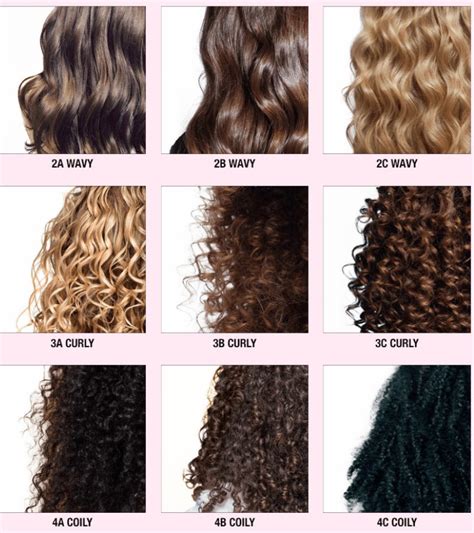Introduction

Embrace the beauty of your coils with a comprehensive guide to curly hair types. From bouncy spirals to soft waves, explore the diverse spectrum of curls and discover the secrets to taming unruly strands.
Type 2: Wavy
- Definition: Defined, S-shaped waves that are not as tightly coiled as curls.
-
Subtypes:
- 2A: Loose, beachy waves with gentle bends.
- 2B: More defined waves with a more noticeable S-shape.
- 2C: Tight, ringlet-like waves that approach curl territory.
- Pain Points: Frizz, tangles, and lack of volume.
- Motivations: Enhancing volume, reducing frizz, and achieving a polished look.
Type 3: Curly
- Definition: Tight, corkscrew-shaped curls with a defined pattern.
-
Subtypes:
- 3A: Loose curls with a springy texture and defined ringlet shapes.
- 3B: Medium curls with a combination of tight ringlets and spirals.
- 3C: Tight, dense curls that resemble corkscrews and require extra care.
- Pain Points: Dryness, shrinkage, and difficulty combing.
- Motivations: Moisturizing, defining curls, and minimizing breakage.
Type 4: Coily
- Definition: Extremely tightly coiled hair that forms zigzag or spiral patterns.
-
Subtypes:
- 4A: Less tightly coiled than other 4 types, with a springy and defined texture.
- 4B: Mediumly coiled hair with defined coils and a Z-shaped pattern.
- 4C: Extremely tightly coiled hair that requires intensive moisture and care.
- Pain Points: Extreme dryness, shrinkage, and susceptibility to breakage.
- Motivations: Retaining moisture, protecting against damage, and enhancing definition.
The Ultimate Curly Hair Care Guide
Moisturizing Magic
- Incorporate deep conditioners and hair masks into your routine to replenish moisture.
- Choose products specifically formulated for curly hair, as they often contain hydrating ingredients like shea butter, argan oil, and honey.
- Leave-in conditioners can provide continuous hydration throughout the day.
Taming Frizz
- Use serums and oils to tame frizz and smooth flyaways.
- Look for products containing silicones, which create a protective layer on the hair shaft.
- Avoid using sulfate-containing shampoos, as they can strip away natural oils.
Defining Dreams
- Apply styling products like gels or mousses to define curls and enhance their shape.
- Use a diffuser attachment on your hairdryer to dry hair gently and prevent frizz.
- Finger-combing can help distribute products evenly and separate curls.
The Science Behind Curly Hair
- Curly hair is caused by the shape of its hair follicles. Follicles that are oval-shaped produce straight hair, while flat or irregular-shaped follicles result in curls.
- The amount of curvature in the follicle determines the tightness of the curl.
- The American Academy of Dermatology estimates that over 60% of people worldwide have curly hair.
Curly Hair Culture: Breaking Down Barriers
- Embrace the beauty of your curls and challenge societal perceptions of “good” hair.
- Join online support groups and communities to connect with others who understand your curly challenges.
- Be an advocate for diversity and representation in the media, showcasing the versatility and beauty of all hair types.
Conclusion
From delicate waves to tightly coiled spirals, the world of curly hair is a tapestry of unique textures and styles. By understanding the different types of curls and embracing the challenges that come with them, you can unleash the full potential of your hair. Let your coils dance with confidence, knowing that your curls are a source of empowerment and individuality.
